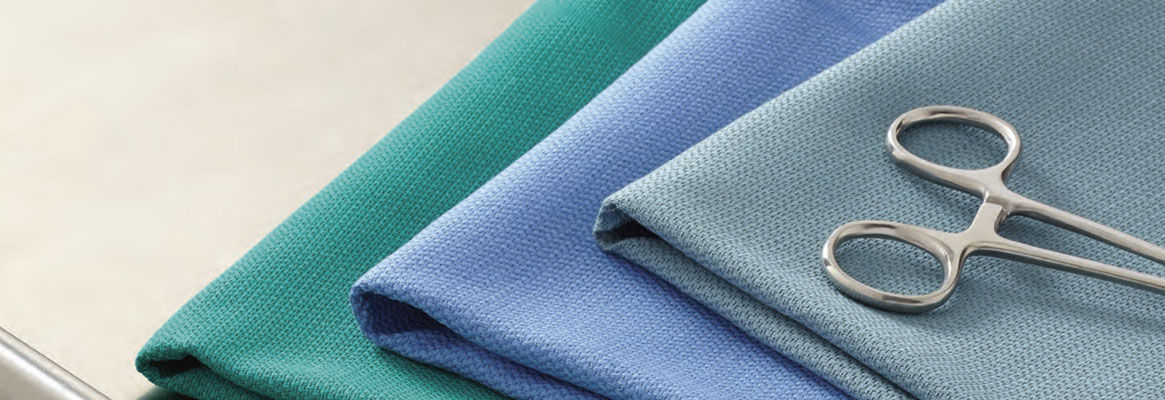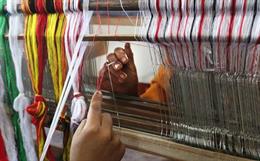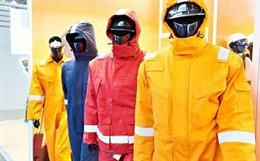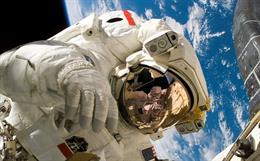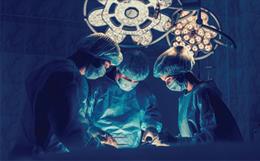Textile is an unavoidable part of the healthcare sector. Excellent quality and precision are required in the field of medical textiles. Healthy and steady growth is seen in this field. Day by day new innovations are taking place in the field of textiles. The term medical textiles cover a wide range of products like surgical gowns, diapers and the products, which are used for external use like wound care.
But now–a-days the application of medical textiles is not limited to the external uses only like plasters, bedding, clothing, wound care and incontinence procedures. It spreads in the areas of internal uses like surgical procedure. It is most growing area in the field of technical textiles. Its wide spread use is clearly seen in the biological and medical applications and is also being used in first aid and for hygienic and clinical purposes. Medical textile includes all the materials used for the hygienic purposes for both the markets, medical and consumer. It is a growing field in India because of favorable conditions like the increase in disposable income and newly developed urban areas. The other factors which are added to it are rise in medical tourism, easy availability of products and increase in female population.
Materials being used in medical textiles
Synthetic and natural both kinds of fibres are being used in medical textiles. Theses include multifilament and monofilament yarns, composite structures, knitted, woven and non-woven fabrics. Silk, cotton, collagen and linen fibres are being used in medicine. Cottons are being used as drapes and operating room garments and they are also used as absorbents like gauzes and swabs. The other use of cotton is in the bedding system of patient. It is also finely used as sutures. Cotton is highly absorbent and easy in care like to sterilize and easy to laundry also. This is the main reason why it is so widely used in medical textiles. Viscose has high absorbent capacity and it is used as superabsorbents. Some other synthetic materials which have very wide spread use in this field are polypropylene, glass, polytetrafluroethylene, carbon, polyester and polyamide.
Requirement of medical textile
Different materials are being used as per the different end usages like biodegradable materials are being used in sutures and absorbent textiles are being used in swabs. Most durable materials with high comfort levels are normally used in the hospital bedding. The material used in the medical textiles should be non-carcinogenic, non-toxic and non-allergenic. It is also a greater need that the material should be sterilized without any special procedure and when it is being sterilized it should not change its physical and chemical properties. It is highly recommended that the material should be of the kind, which human body can accept. The sizes of pores and the specific amount of pores is a considerable factor, which affects the reactions of blood and tissues in the body. The application is the main thing which decides biostability or biodegradability of the material.
The production cost is entirely dependent on the application. The artificial skin and vascular grafts are costlier than swabs and surgical gowns. Every country has different production standards for the medical textiles.
Availability in diverse forms
Non-woven, woven, braided and knitted are the four fabrics which are mainly used in the production of medical textiles. The first one is directly made from the fibres and for rest of the three yarns is required. Non-wovens can also be made directly from the polymers. The fibres are being classified for the use of surgery and medicine as per their type, synthetic, natural, non-biodegradable or biodegradable.
Further more medical textiles are divided into different categories as woven base surgical plasters and dressings, circular tubular fabrics, surgical dressings, non-adhesive woven products, elastic adhesive bandage (used as a stretchable base), base for both rigid and stretchable medical first aid, non-extensible and elastic bandage.
These medical textiles are broadly divided under these major categories.
1. Implantable Textiles
The use of these textiles can be seen in the sutures and replacement surgery like artificial ligaments and vascular grafts.
For soft tissue implantation: For the making of man made tendons and ligaments and for the repair of joints of shoulders, knees, ankles and arms, the carbon fibres are used. Tensile strength, porosity, flexibility and tissue compatibility are the main things which are required for an artificial tendon and carbon fibre has all these qualities.
Wound closures (sutures): This material can be further divided into two categories as non-absorbent and absorbent. This material is being used as multi-filament or mono-filament in the tie of bleeding vessels, closure of wounds and in joint tissues.
Biomaterials for dentistry: Polymethyl methacrylate and products derived from it have very wide use in the dental treatments.
2. Devices used outside the body
Induce the artificial kidney which works as a dialyser for the purpose of blood purification, for mechanical lung and as and artificial liver some devices are used which are made of the advanced fibres.
3. Non-Implantable Textiles
Some products have resistance to microorganisms, alkalis, acids and all other impurities. These are used for the application outside the body with skin contact or without skin contact.
As bandages: Non-woven, woven or knitted either having elasticity or not having any elasticity, all the materials are suited for making bandages. For orthopedic use bandages are made from non-woven materials and this can be used under plaster casts for comfort and padding effect. Knitted bandages are made in tubular forms but in different diameters. They are made from elastomeric or cotton yarns.
As wound care products: The materials which give soft and padded effects and protect the wounds from the outside injury are best for wound care products and medical textile is rich in all these qualities.
4. Products for health care & hygiene.
To protect healthcare practitioners from the infections and from the blood contaminations is the main aim of the health care apparels. These apparels can be made of any one non-woven, knitted or woven.
Surgical drapes: Flame resistance, toxicity, tactile softness, liquid barrier properties, static safety, abrasion resistance and liquid repellency are the main requirements for the surgical drapes which are easily achieved with the new innovations in the field of the medical textiles.
Surgical gowns: Surgical gowns are the uniform for the surgeons. To avoid infection and contamination problem non-woven, disposable gowns are being adopted.
Surgical masks: High air permeability, non-allergic, light weight and high bacterial filtration capacity are the main requirements of it. Disposable masks made of non-woven material give easy care maintenance.
Surgical caps: These disposable caps are made from non-woven, spun-laid process or parallel-laid cellulosic fibres.
5. Medical Textiles for other purposes.
Medical textile is being used widely for the other purposes like mattresses, beddings, wipes and clothes and incontinence products.
Incontinence products: High comfort level, anti-allergic capacity and high protection level so it should not leak, is the main requirements for incontinence products. Diapers and bedding sheets are the different types of these products
Role of Government
Good awareness is necessary in the field of medical textiles. Government as well as private sectors must do help in the setting up of testing laboratories so further innovations can be done in the field of the medical textiles.
Government has given some additional benefits of subsidiary and additional five percent of interest to cover up the damages of the processing machinery. The government is trying to set up standards to reach with the international standards. Government is trying to set up new six centers for the research of technical textiles. It is promoting the use of non-woven textiles in the government hospitals.
Progressive scenario of nation
India is second largest country in the world as per the human population, and it is a growing sector of medical products and services and healthcare. Due to the recent growth India has developed so many new products indigenously in the field of medical textiles. The share of India is 4.02 percent in the world in the consumption of medical textiles. India is importing baby diapers and adult diapers but exporting surgical sutures and dressings.
The expected rise in the market of medical textiles is 11 percent within next five years. The market rise in the year 2006-07 is Rs.1,260 crore and the expected rise is Rs. 2,256 crore by the year 2011.
The expected growth in the area of sanitary napkins is Rs. 699 crore in the year 2007-08. The incontinence diapers of Rs. 135 crore are the expected amount to be sold in the recent year. The market of wound care products were Rs. 520 crore in the year 2003-04 and the expected rise is Rs.695 crore till the year 2007-08. The market of healthcare textiles was Rs.11 crore and the expected rise in this year is 120 crore. The market of sutures were 106.19 crore in the year 2003-04 and the expected rise in this year is 144 crore. In all the medical implantable goods, tendons and artificial joints have increased growth rate in comparison with artificial kidneys, valves and vascular grafts. Due to the medical tourism the healthcare sector of India will get good rise in the coming years.
International scenario
The growth in medical textile industry is a result of an ageing population, rise in the occurrence of diabetes in the world and a steady advancement in technology and products. Advanced and traditional both the sectors are included in the wound care market and the evaluated market share of this is 7.2 billion in the year 2006. Traditional wound care products had mainly gauze-based dressings, low technology such as non-wowen and woven sponges, non-adherent bandages and conforming bandages. That the advanced wound care products had a wider range of different technologies is broadly divided into three categories: antimicrobial dressings, moist wound dressings, antimicrobial dressings, and biological products such as tissue-engineered and skin substitute products and moist wound dressings. A four per cent increase per annum in the consumption of textile materials for medical products is expected by 2010 reaching $ 2.4 million T with a value of $ 8.2 billion
Out of a $ 60 billion market worldwide of technical textiles, medical textiles constitute around eight percent. The diseases which are result of poor blood circulation and immobility like diabetic ulcers, venous stasis ulcers and pressure ulcers are commonly seen among the diabetics, immobilized, immunosuppressed and elderly people. A patient’s quality of life is decreased and the cost of care is greatly increased in these chronic conditions. The US market has rise of 8-10 percent and some segments have rise of 15-20 percent. 3,00,000 people are getting employment through 6000 manufacturers of medical goods. US accounted for over $15 billion exports annually generating a surplus of $ 8 billion. The estimation of global wound care industry was $ 3.3 billion.
Future prospect
Medical textiles has emerged as a new generation of products created using latest innovations in nanotechnology, novel process technologies known as plasma treatment, biomaterials and advanced flexible materials. There has been two percent annual growth in India’s healthcare industry. By 2010, the market size of medical textiles in India is estimated to go above Rs 3,000 crore. However, it is disturbing to see the lack of hygiene awareness among the medical textile users in India. Medical professionals are using medical drapes and gowns of their own choices and no authoritative rules and regulations are there.
A hospital should focus solely on the guarantee of protection of patients and medical personnel while using any disposable or reusable material. In spite of its higher cost, hospital authorities should mandate use of specialized drapes and other accessories since the cost of managing a patient's post surgery risks like infections is much higher than that. Also the standardization of these specialized materials will only succeed if microbiologists, users and manufacturers work with each other in well accordance. Government must form norms about checking the standards of special textiles by incorporating mandatory testing methods for the same.
References:
Modern Textiles Volume 2 issue 3 June-July 07
www.technical-textiles.net
www.phyorg.com
www.researchandmarkets.com
To read more articles on Textile, Industry, Technical Textile, Dyes & Chemicals, Machinery, Fashion, Apparel, Technology, Retail, Leather, Footwear & Jewellery, Software and General please visit http://articles.fibre2fashion.com
To promote your company, product and services via promotional article, follow this link: http://www.fibre2fashion.com/services/article-writing-service/content-promotion-services.asp

